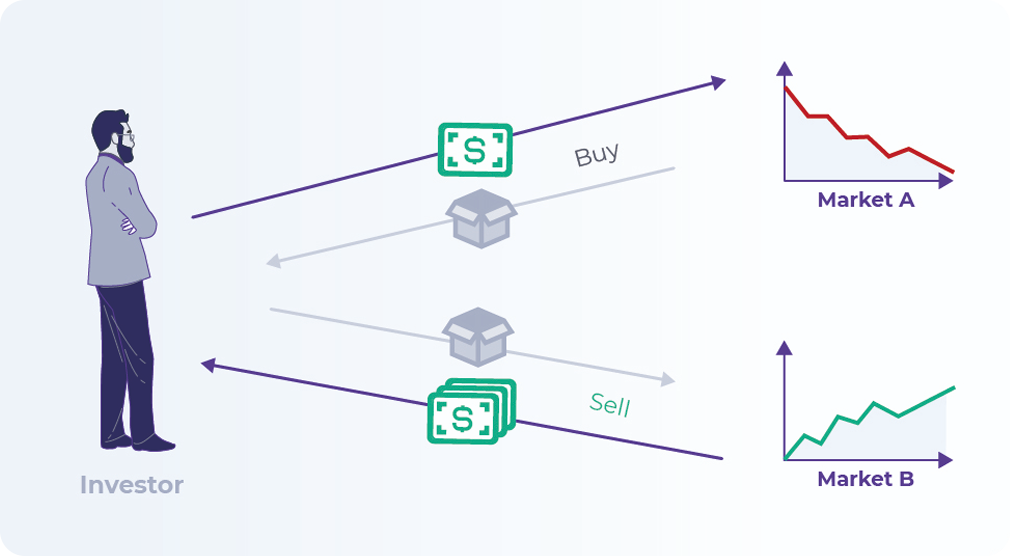Ever searched foreign websites to see if you could buy what you wanted for a cheaper price?If you have, you’ve engaged in arbitrage.
Arbitrage simply means exploiting price variations across different markets. In FX trading, this typically entails buying foreign currency — or a derivative such as an option or forward — in one market, and selling it at a profit in another market.
Let’s look at an example. Imagine you see these exchange rates advertised:
- EUR/USD: 1.0543 (€1 is worth $1.05)
- EUR/GBP: 0.8531(€1 is worth 85p)
- GBP/USD: 1.2569 (£1 is worth $1.26)
The differences between the three currency pairs creates an arbitrage opportunity.. Imagine you have $10,000. You buy euros and get €9,484 (10,000/1.054). Then, you exchange your euros for GBP, getting £8091 (9484×0.8531). Finally, you exchange your GBP for USD, ending up with $10,169 (8091×1.2569). You’ve made a profit of $169 on your original $10,000.
The catch is that, particularly in assets that trade frequently like USD, EUR and GBP, these inefficiencies are very difficult to exploit, and the very act of exploiting them will usually correct them. As traders buy and sell, prices across different markets will move closer and closer to fair value and discrepancies will typically disappear. As a result, there’s a very small window of opportunity in which to act — sometimes a matter of milliseconds.

Some Facts
- The term ‘arbitrage’ was first used in reference to the FX markets by French mathematician Mathieu La Porte in 1704. But merchants have been exploiting exchange rate discrepancies for as long as currencies have existed. Records suggest that, between 480 and 404 BC, the Persians purposely undervalued silver relative to gold to boost the profits from their extensive exports of silver to Greece and other Mediterranean civilisations.
- Arbitrage is sometimes described as ‘riskless’, but this isn’t entirely true. Because exchange rates fluctuate constantly, you must execute trades almost simultaneously to benefit. If the exchange rate fluctuates even by a few pips before you execute your trade — a pip is one hundredth of a percentage point — it could wipe out your profit or put you out of pocket. You also need to take transaction costs into account. If your profit on a trade is relatively small, the fees you pay to execute that trade could cancel the profit out.
- Because speed is of the essence, traders typically identify and exploit arbitrage opportunities using high-powered computers and specialised algorithms. This technique — called high-frequency trading — makes it possible to execute large volumes of trades in fractions of a second.
Want to know more?
- High-frequency trading is highly controversial. Critics argue it’s unethical and gives investors with more capital and resources an unfair advantage. But this article argues it doesn’t deserve its bad reputation and that many of the criticisms are unfounded.
- FX traders typically use one of three arbitrage techniques: triangular arbitrage (which is the strategy in our example above), statistical arbitrage, and interest rate arbitrage. This article walks you through the basics of these three strategies, with examples
ALT21’s perspective:
“While arbitrage can seem like a risk-free way to profit off exchange rate fluctuations, it’s actually an advanced technique. In most markets, price anomalies are tiny and may only exist for fractions of seconds, so you need sophisticated trading systems and access to a lot of capital to make a profit. This is for specialist FX traders only. “


